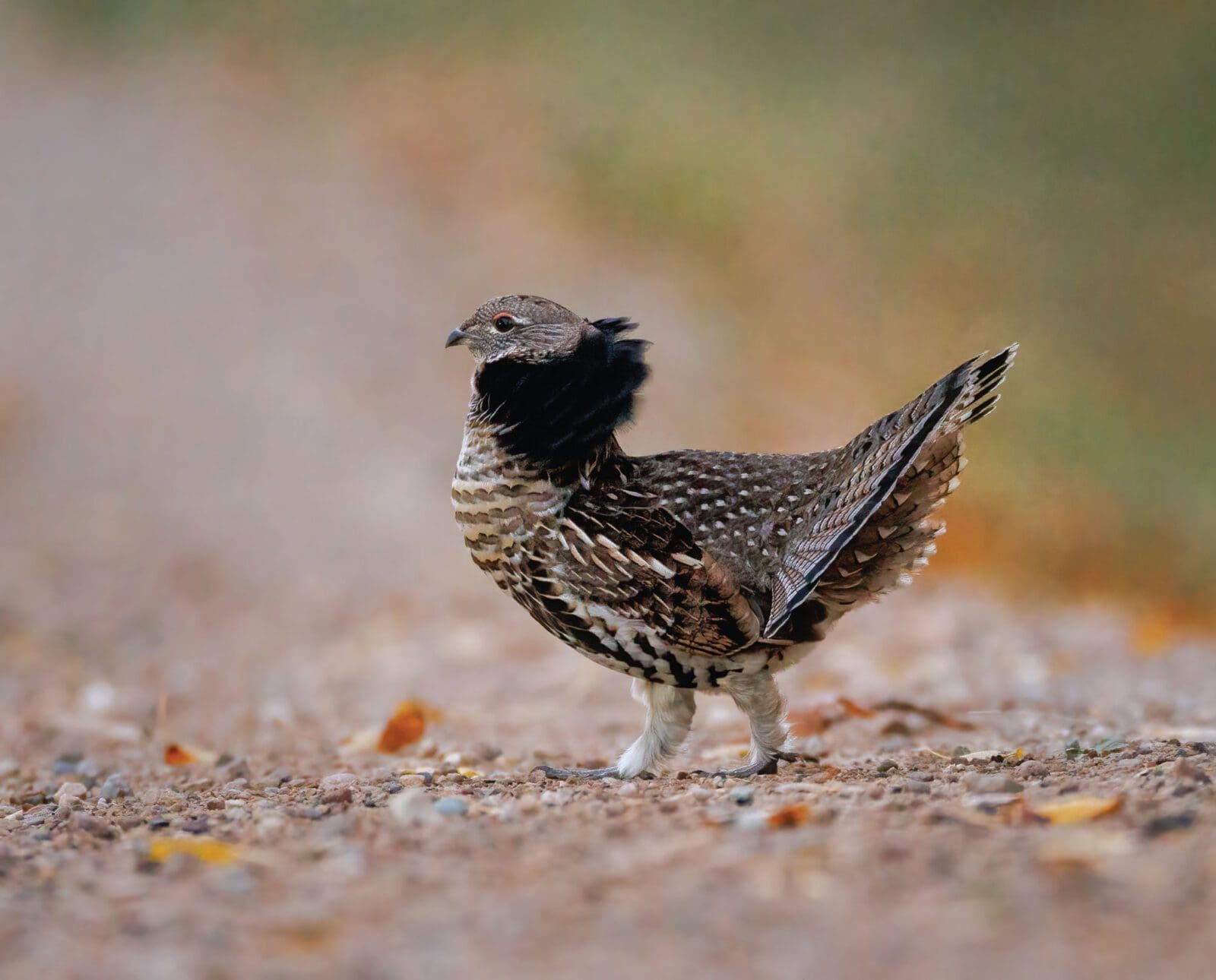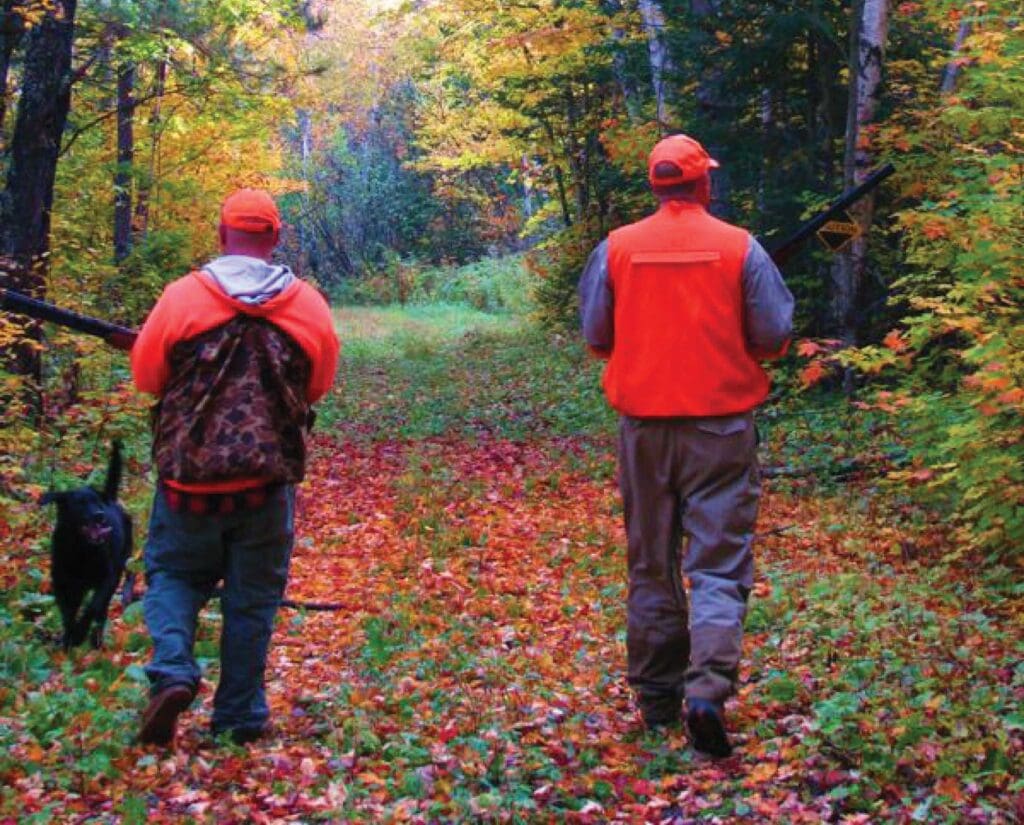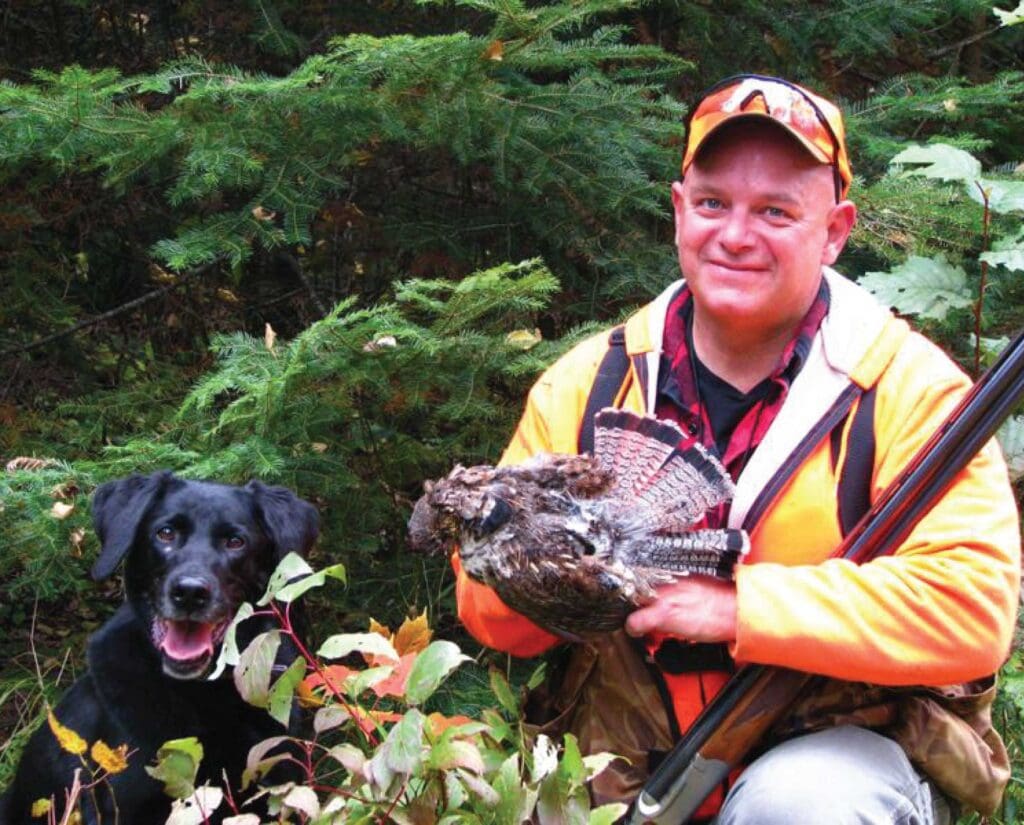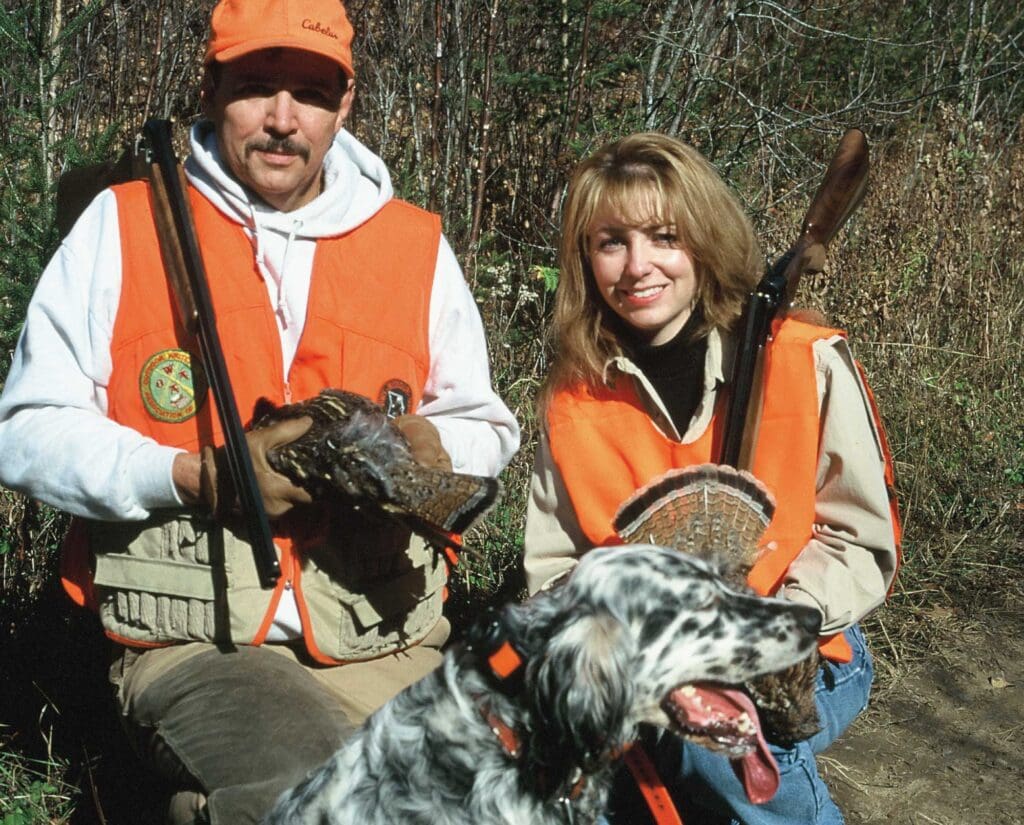Home » Conservation » Reintroducing Ruffed Grouse in Missouri
Reintroducing Ruffed Grouse in Missouri

Kenneth L. Kieser is an award winning author of over…
The history of ruffed grouse populations, ruffed grouse hunting, and the reintroduction of ruffed grouse to its native range of Missouri
“Ruffed grouse hunters go strange when they talk about ruffed grouse. They get gooey, and words like ‘majestic’ and ‘regal’ pepper the conversation.”
Joel Vance, Missouri Conservationist, September 1997.
The late, great Missouri outdoor writer Joe Vance invited me on a ruffed grouse hunt in 1985. Vance raised beautiful Brittany’s that worked as a precision team pointing Northern Bobwhites. I had never seen a ruffed grouse in the wild but had read about hunting the unique species in magazine articles written by Vance, one of my early mentors in journalism. He was a heavy advocate of restoring Missouri grouse and worked with the Missouri Department of Conservation and the Ruffed Grouse Society to achieve this goal.
I gratefully accepted his invitation to hunt. We walked several hundred yards through old timber before entering a large, burnt section of woods where lightning had struck five years before. There was still some evidence of scorched earth, but new growth was sprouting up everywhere. It was thicker than before fire cleansed the area. The walking was strenuous, even for Vance’s dogs.
The dogs had hunted grouse before and understood their unpredictable habits. Both Brittanys immediately acted birdy and started weaving in and out of the new growth of saplings and ground cover. They occasionally dropped down on a point, then slowly moved forward on grouse that briefly held, then moved. Watching the dogs and moving forward was almost dangerous while bumping into saplings.
Missouri in October is beautiful, with various hardwood trees sporting fall colors of orange, yellow, and shades of green mixed with conifers. I was admiring a particularly colorful area when suddenly, powerful wings went brbrbrbrbr ten yards in front of me. Those wings quickly propelled a grouse out of harm’s way. I didn’t see a feather.
This happened four more times that day. I saw one grouse before the day’s end; I swung my shotgun into a sapling. I could not imagine ever shooting one of these birds. Walking away, I felt happy just to have seen one.

Ruffed Grouse Hunting in Missouri
Missouri’s first contemporary grouse hunting season began in 1983. Hunters purchased a special grouse permit, and the Conservation Department limited the permits to 3,000. Out of that number, 2,917 permits were sold. Hunters took 151 ruffed grouse that first year.
Missouri ruffed grouse hunting ceased after the 2010-2011 season due to a lack of interest and harvest success. I think it’s safe to say Missouri hunters may have become frustrated by walking long, challenging distances only to hear thundering wings in the thick cover. Vance wrote in the Missouri Conservationist in 1997, “Ruffed grouse hunting confuses most Missouri bird hunters. It doesn’t take much of that behavior to send frustrated hunters back to more open areas and quail, which come in bunches and behave the way Show-Me hunters think they should.”
Since that hunt with Vance, I have sought ruffed grouse in Minnesota and Wisconsin. They have larger populations there and more opportunities to shoot. In the land of 10,000 lakes and the Dairy State, so-called parking lot birds flush by your truck after a day’s hunt. Commonly, birds are bold enough to leave thick cover and fly down the middle of a logging trail, too. Ruffed grouse’s presence through the northern states is expected. However, perhaps this is not true in Missouri, a state most would consider too far south for this species.

Ruffed Grouse Food and Habitat in Missouri
Common sense might suggest that ruffed grouse would thrive in northern Missouri. However, today they are mainly found in the River Hills region, located in an east-central part of the state that covers Callaway, Montgomery, and Warren counties. These counties have high percentages of young stands of trees compared to the surrounding areas.
Grouse thrive in young forests—high-density woody stems and herbaceous vegetation provide food and cover. The highest quality habitat results when regenerating stands are five to 15 years old. However, regenerating forests up to 25 years old can provide resources that grouse need. Young, dense, even-aged stands offer cover from predators throughout their Missouri range, which is especially important during spring drumming periods. Some new timber stands result from natural disturbances like tornadoes and lightning-started fires.
Grouse eat a variety of plant matter, including wild grapes, tick trefoil, rosehips, sumac berries, clovers, hophornbeam catkins, small acorns, green leafy plants, seeds, bittersweet, sedges, bush clovers, and other plants in addition to insects. Chicks feed mainly on insects to meet their high protein and energy requirements. In winter, grouse feed on food common in Missouri, like wild fruits and acorns, but the catkins of hophornbeam trees are a major cold-weather staple.
Missouri Ruffed Grouse Restoration and Reintroduction Efforts
Ruffed grouse are native to Missouri and, in past years, have been located as far south as northern Arkansas. Lewis and Clark’s journals mention finding this hardy bird up and down the Missouri River bottoms into Iowa. Sadly, Missouri’s grouse population was almost destroyed in 1900 through a lack of habitat. About half of Missouri’s 32 million acres of forested land had been cleared for homesteads, row crops, or hay. The state reported having approximately 100 birds by the 1930s. A 1940 effort to bring back grouse failed again due to a lack of proper habitat.
“Efforts to restore Missouri’s grouse population using wild-trapped grouse from Ohio and Indiana were initiated during the late 1950s and early 1960s,” said Reina M. Tyl, the wild turkey and ruffed grouse biologist for the Missouri Department of Conservation (MDC). “Grouse were released on the Daniel Boone Conservation Area (DBCA) and Thomas S. Baskett Wildlife Research and Education Center (TBWC), both located in the River Hills Region of central and east-central Missouri. These releases appeared to be successful, and Missouri’s grouse restoration was expanded in 1978.”
When this restoration effort was completed in 1996, more than 5,300 grouse had been released on 78 sites in 37 counties. Unfortunately, the only populations that showed the ability to persist long-term were those associated with the original release sites on DBCA and TBWC. Despite these populations expanding in range, drumming surveys indicated ruffed grouse numbers in these areas had declined since the 1980s.
“Still, Missouri continues a bumpy love affair with King Ruff,” Vance wrote in 1997. “Missouri may be the only state that had active Ruffed Grouse Society chapters before there was a hunting season. And Missouri is the site of the most ambitious grouse project ever funded by the Ruffed Grouse Society, a $300,000 timber management study that ran for a dozen years.”
“Prior to this most recent translocation effort, a population viability study was conducted within the River Hills Region of east-central Missouri,” Ryl said. “That study indicated that areas need to be maintained in early-successional forest habitat to sustain a grouse population. MDC staff updated the forest management plans for DBCA and LLCCA so these areas can reach their maximum habitat potential for grouse and other early-successional forest wildlife species.”
The Missouri Department of Conservation revised its management plans for Little Lost Creek and Daniel Boone Conservation Areas to allow for more regular timber harvesting to ensure early-successional forest habitat exists in perpetuity. The River Hills Forest Habitat Partnership, a coalition of state, federal, and private landowners, has also created young forest habitat on private lands.
“In response to declining grouse numbers, especially in the River Hills Region, the Missouri Chapter of the Ruffed Grouse Society and the Audubon Society of Missouri formed a partnership with MDC in 2000,” Ryl said. “The partnership has since expanded to include the National Wild Turkey Federation, U.S. Fish and Wildlife Service, Quail Forever, Quail and Upland Wildlife Federation, and a number of private landowners and corporate sponsors. The goal of the partnership was to restore and maintain 10 to 15 percent of the project area in a regenerating oak-hickory forest condition to benefit early-successional wildlife species.”
Habitat restoration has focused on private lands to complement existing work on public lands at DBCA and LLCCA and to expand the amount and connectivity of early-successional forest habitat. Since the partnership was formed, thousands of acres of habitat management have occurred within the River Hills Region, involving hundreds of private landowners. Recently, private land habitat management efforts have been led jointly by MDC staff and members of the Missouri Grouse Chapter of the Quail and Upland Wildlife Federation.
Missouri greatly succeeded in establishing eastern wild turkeys throughout our state. This eventually played a large part in reintroducing ruffed grouse.
“Missouri played a major role in the restoration of the wild turkey in exchange for ruffed grouse in many parts of the country, especially in the Midwest,” Ryl said. “By the 1970s, we had rapidly expanding populations of turkeys and were able to supply turkeys to states that were looking to reintroduce the previously extirpated birds.”
Missouri received ruffed grouse from several states, including Indiana, Minnesota, and Wisconsin, in exchange for the turkeys. During this most recent translocation effort, no turkeys or other wildlife were traded for grouse received from Wisconsin. However, Missouri donated to Wisconsin’s efforts for ruffed grouse habitat.

Missourians Value Ruffed Grouse
“Ruffed grouse have both ecological value as a native bird species and intrinsic value to Missourians, especially in the Missouri River Hills Region where folks can remember hearing and seeing grouse around their properties and Conservation areas not very long ago,” Rly said. “Ruffed grouse are charismatic. Male grouse conduct a distinctive ‘drumming’ display to lay claim to their territory and attract females for mating. Males will use a fallen log as their stage and beat their wings so quickly that a temporary air vacuum is created, which creates a sound similar to a bouncing basketball.”
I would love for my grandchildren to discover this unique and amazing bird that once fed our ancestors. Ambitious efforts are underway to bring back Missouri’s ruffed grouse populations on “a wing and a prayer.”
Kenneth L. Kieser is an award winning author of over 40 years with several thousand bylines in magazines and newspapers. He was inducted in the National Freshwater Fishing Hall of Fame in 2010, first outdoor writer in the Missouri Sports Hall of Fame in 2020, The Missouri Waterfowler's Hall of Fame in 2013 and the Park Hill High School Alumni Hall of Fame in 2019, all due to his writing career. He was the Missouri Conservation Communicator of the year in 2014 and the Kansas Conservation Communicator of the year in 2015, third person in history to be honored by both states. He has written nine books and currently is a Missouri Hunter's Education Instructor, father, and grandfather of six.




I hunted grouse in Warren and Callaway when I was in my 35 to 40 year age group…tough, strenuous and demanding . I’m 70 now and still quail hunt , you will not get youth involved in this ghost bird where demanding walking , counting number of flushes as a successful day and few if any shots. Joel Vance did more harm for Quail with his articles on how many coveys and how friendly farmers were in North Missouri than tearing out fence rows and Crp ground. When we had quail we were bombarded with out of state hunters knocking on farmers doors at 5:00 in the morning. Pissed a lot of farmers off I personally lost a lot of private hunting when they stopped all hunting. Public ground was over run with rude , trash strewn, game cleaned and thrown on ground hunters . This is Missouri spinning the save the species wheel….JMO